#life is a novel
Explore tagged Tumblr posts
Text
'Life' contains situations more interesting, more novelistic than any novel.
from In Search of Lost Time, Book 1: Swann’s Way by Marcel Proust
#in search of lost time#swann's way#marcel proust#proust#life#the book of life#book of life#life is a book#life is an adventure#life is interesting#life is novelistic#life is a novel#novel#novelistic#novelty
19 notes
·
View notes
Text

if it's good enough for you, then it deserves to be made. don't let anyone else decide if your story is worth it or not.
#this more for myself than anything#because i get so bogged down on if my story is good enough for other people and if others would like it#writeblr#creative writing#writers of tumblr#writerscommunity#writers#writer stuff#book tropes#novel writing#writing#writers on tumblr#bookblr#authors#book writing#writer#publishing#writing stuff#on writing#ao3 writer#female writers#writers and poets#writing life#writing memes
29K notes
·
View notes
Text

the holy grail types of fanfic
#writerscommunity#enemies to lovers#creative writing#writers life#fanfiction#archive of our own#ao3#ao3 writer#ao3feed#ao3 fanfic#fiction writing#female writers#writers on tumblr#my fic#original story#original character#fanfic writing#femme fatale#fanfic#enemies to lovers trope#writing tropes#character tropes#dark romance#romance novels#novel writing#indie author#fiction#fanfic meme#writing memes#creative process
20K notes
·
View notes
Text
If you’re having writers block…READ!!!! CONSUME MEDIA
I feel like I don’t hear that given enough as advice for writers block..just read? Watch tv? Movies? Find inspiration in media.
Writers block is a lack of inspiration, so go collect more.
#creative writing#writers on tumblr#writerscommunity#writing blog#writblr#writeblr#writing#aspiring writer#fantasy writing#writers life#female writers#fiction writing#novel writing#on writing#writers#writer#writer stuff#writerslife#writers of tumblr#writers community#writers block#writerblr#writers on writing#writing motivation#writing community#writing thoughts#writers and poets#young writer#writing tips#writing problems
15K notes
·
View notes
Text
Other Words for "Look" + With meanings | List for writers
Many people create lists of synonyms for the word 'said,' but what about the word 'look'? Here are some synonyms that I enjoy using in my writing, along with their meanings for your reference. While all these words relate to 'look,' they each carry distinct meanings and nuances, so I thought it would be helpful to provide meanings for each one.
Gaze - To look steadily and intently, especially in admiration or thought.
Glance - A brief or hurried look.
Peek - A quick and typically secretive look.
Peer - To look with difficulty or concentration.
Scan - To look over quickly but thoroughly.
Observe - To watch carefully and attentively.
Inspect - To look at closely in order to assess condition or quality.
Stare - To look fixedly or vacantly at someone or something.
Glimpse - To see or perceive briefly or partially.
Eye - To look or stare at intently.
Peruse - To read or examine something with great care.
Scrutinize - To examine or inspect closely and thoroughly.
Behold - To see or observe a thing or person, especially a remarkable one.
Witness - To see something happen, typically a significant event.
Spot - To see, notice, or recognize someone or something.
Contemplate - To look thoughtfully for a long time at.
Sight - To suddenly or unexpectedly see something or someone.
Ogle - To stare at in a lecherous manner.
Leer - To look or gaze in an unpleasant, malicious way.
Gawk - To stare openly and stupidly.
Gape - To stare with one's mouth open wide, in amazement.
Squint - To look with eyes partially closed.
Regard - To consider or think of in a specified way.
Admire - To regard with pleasure, wonder, and approval.
Skim - To look through quickly to gain superficial knowledge.
Reconnoiter - To make a military observation of a region.
Flick - To look or move the eyes quickly.
Rake - To look through something rapidly and unsystematically.
Glare - To look angrily or fiercely.
Peep - To look quickly and secretly through an opening.
Focus - To concentrate one's visual effort on.
Discover - To find or realize something not clear before.
Spot-check - To examine something briefly or at random.
Devour - To look over with eager enthusiasm.
Examine - To inspect in detail to determine condition.
Feast one's eyes - To look at something with great enjoyment.
Catch sight of - To suddenly or unexpectedly see.
Clap eyes on - To suddenly see someone or something.
Set eyes on - To look at, especially for the first time.
Take a dekko - Colloquial for taking a look.
Leer at - To look or gaze in a suggestive manner.
Rubberneck - To stare at something in a foolish way.
Make out - To manage to see or read with difficulty.
Lay eyes on - To see or look at.
Pore over - To look at or read something intently.
Ogle at - To look at in a lecherous or predatory way.
Pry - To look or inquire into something in a determined manner.
Dart - To look quickly or furtively.
Drink in - To look at with great enjoyment or fascination.
Bask in - To look at or enjoy something for a period of time.
#on writing#creative writing#writing#writing tips#writers block#how to write#thewriteadviceforwriters#writeblr#writers and poets#writers on tumblr#novel writing#fiction writing#romance writing#writing advice#writing blog#writing characters#writing community#writing help#writing ideas#writing inspiration#writing guide#writing prompts#writing a book#writing resources#writing reference#writing tips and tricks#writers#writing tools#writing life#writing software
12K notes
·
View notes
Text
there's something kinda funny to me about certain ways scar tends to be drawn because it's like. okay imagine hypothetically you took a distillation of fanon scar designs and showed it to someone who's never even heard of a minecraft, and asked them what they think this guy might be like. we're ignoring context here, pretend we're showing them a ref sheet. and it's like, alright, here's a rugged looking buff guy. nice abs. lots of scars. he's got a smug grin on his face. very shirtless. he looks like the love interest in a bodice ripper. i bet he's got some dark angsty secret he keeps buried underneath that suave facade. but not buried too deeply, just enough to intrigue.
and then you go watch third life and he is like a cat whose owner keeps desperately trying to make him stop eating plastic.
#wotcher talk#mcyt#life series#trafficblr#goodtimeswithscar#this is of course neutralized by the fact that people draw this buff scarred romance novel LI like a cat trying to eat plastic#as they should
13K notes
·
View notes
Text
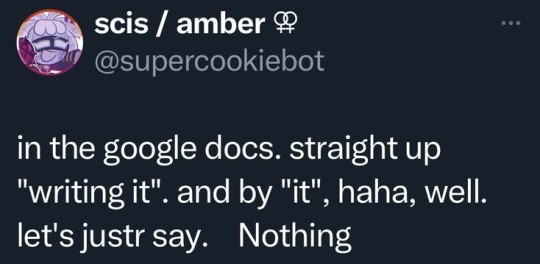
#fanfiction#writeblr#writer#writers#writing#writerscommunity#writblr#writer problems#writings#my writing#wip#write#being a writer#creative writing#female writers#fiction writing#just writer things#novel writing#writer life#writer meme#writer memes#writer struggles#writer stuff#writer things#writerblr#writers block#writers community#writers life#writers of tumblr#writers on tumblr
24K notes
·
View notes
Text
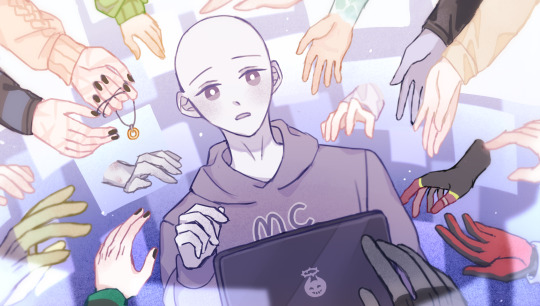
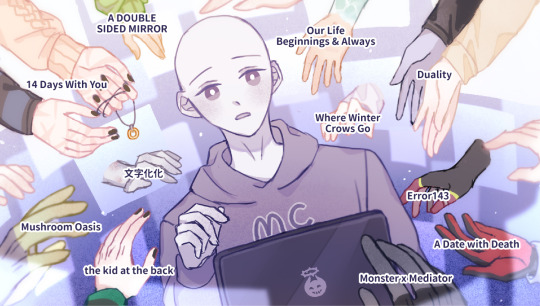
📑The games appearing inside (in clockwise order)📑
▸the kid at the back ▸Mushroom Oasis ▸文字化化 ▸14 Days With You ▸A DOUBLE SIDED MIRROR ▸Our Life Beginnings & Always ▸Where Winter Crows Go ▸Duality ▸Error143 ▸A Date with Death ▸MonsterxMediator
Thank you very much for the existence of these games; they have healed my soul (´-ωก`)
#fanart#visual novel#the kid at the back#Mushroom Oasis#文字化化#14 Days With You#A DOUBLE SIDED MIRROR#Our Life Beginnings & Always#Where Winter Crows Go#Duality#Error143#A Date with Death#Monster x Mediator
10K notes
·
View notes
Text

#my memes#my photo#bookblr#books and reading#bookish#books#booklr#bookstagram#readers#novels#reading#book memes#book addict#book and reading#book blog#spilled writing#book community#book girl#book humor#book hoarder#book jokes#book lover#book life#book reading#book rambles#book tumblr#book thoughts#book things#book vibes#girl rotting
7K notes
·
View notes
Text
Creating Emotionally Devastating Scenes.
Crafting a scene that earns the total sympathy of your readers can be challenging, but it's not impossible. Most emotionally devastating scenes fail at two things, but when these are done right, the results can be powerful.
⚪ The Important Concepts for Writing an Emotionally Devastating Scene
1. The Build-Up,
2. Breaking the Dam.
Before I explain these concepts, let me share a case study.
⚫ Case Study
I wrote a story about a young orphan named Jackie and her younger brother. Their village was burned down, leaving them as the only survivors.
For the next few chapters, readers followed their painful journey and their struggle to survive. The younger brother had a heart problem, and Jackie vowed to become a cardiologist to save him.
She was very ambitious about it, but at the time, it was very ironic. Later in the story, when they encountered a tragic living condition with a family, the brother died while telling his sister how much he missed their parents.
When her brother was fighting for his life, she was sent out of the room, only to be let in again to see his cold, lifeless body.
⚪ Explanation of Concepts
1. The Build-Up
The build-up is extremely important when you aim to convey strong emotions. Here's a secret: if you plan for a scene with strong emotions, start leaving breadcrumbs from the very beginning of the story.
Take the previous case study. I carefully built up their journey so people could easily relate and feel the pain of the older sister during her brother's sudden death.
You need to give the situation enough reason to feel utterly hopeless and devastating. Gradually cultivate the tension until it's ready to let loose.
⚫ Understanding the Use of Breadcrumbs.
Breadcrumbs in stories ensure you utilize the time you have to build up certain emotions around your characters.
At the beginning of my story, Jackie’s fate was already pitiable, but she survived every hurdle. This gave the readers enough to feel for her while still leaning away from the outcome. When I built enough, I introduced her brother's sudden death.
Hence, leave your breadcrumbs while leaning away from the outcome.
⚪ How to Properly Leave Breadcrumbs
When building up your story, consider these elements:
☞ Character Relatability: The characters need to be realistic to draw readers into the story. This helps readers invest themselves in your story.
☞ Realistic Emotional Pain: Just as characters need to be relatable, their emotions need to be realistic and not appear forced.
☞ Create a Strong Emotional Attachment: Give them something they care about or that has the power to ruin their lives in any way. It could be something that makes them happy or something their happiness relies on. When it's time, snatch it away without remorse.
☞ Have a Backstage Struggle: This struggle keeps readers occupied, so they won't see the outcome coming. For example, Jackie’s constant struggle to find food and shelter keeps readers engaged while the impending tragedy looms in the background.
☞ Attach Believable Elements: For a realistic character, emotion, and struggle, attach believable elements. It could be death, ailments, sickness, disorder, disappointment, failure, etc.
Now that we've covered the build-up, let's move on to the next crucial part.
2. Breaking the Dam
This is when you make your readers feel the strong emotions alongside your characters. All the tension you’ve been building up is released, making all emotions come into play.
☞ Break Your Strong Attachment: Cut off your strong attachment from your character when they least expect it or at a point when they couldn't use more struggles (i.e when they are helpless).
This will not only evoke readers’ emotions but also pique their curiosity as they wonder how the character will survive the situation.
☞ Description of Sensory Details to Invoke Emotions: The advice of "show, don't tell" will be really helpful here. It's crucial to ensure that the final execution matches the build-up.
A well-crafted build-up can fall flat if the emotional release isn't handled effectively. To avoid this, blend the climax seamlessly into the narrative, making it feel natural and impactful.
Reblog to save for reference! 💜
#writing#writeblr#writers on tumblr#writer#writers and poets#writerscommunity#writing community#wattpad#ao3 writer#a03 writer#writers of tumblr#aspiring author#aspiring writer#writing advice#writing blog#creative writing#writing discussion#writing encouragement#writing guide#writing help#writing ideas#writing journey#writing life#writing motivation#writing novels#writing on ao3#writing process#writing resources#writing reference#writing requests
1K notes
·
View notes
Text
I love taking my readers on a journey.
Where are we going? I dunno. How fast am I driving? Don't worry about it. Unlock the door? Just put your seatbelt on you'll be fine.
#creative writing#a03 writer#fiction#original story#writer#writers on tumblr#writers and poets#writing#novel writing#writerscommunity#writer problems#female writers#writing life#horror writing#writers#writer thoughts#writer things#writer stuff#writer life#aspiring writer#a03 author#author
2K notes
·
View notes
Text
"you're the writer, you control how the story goes" no not really. i wrote the first sentence and then my characters said "WE WILL TAKE IT FROM HERE" and promptly swerved into an electrical fence.
#now im watching their whole lives fall apart on google docs#i dont know whats happening but by god im excited to see where it goes next#writers on tumblr#writerscommunity#writeblr#writing#bookblr#creative writing#writing life#writers and poets#novel writing#my characters#original characters#writing stuff#fanfiction#darkacademia#10k#20k#30k
39K notes
·
View notes
Text
*writes two paragraphs after months of literally nothing and it took three hours*
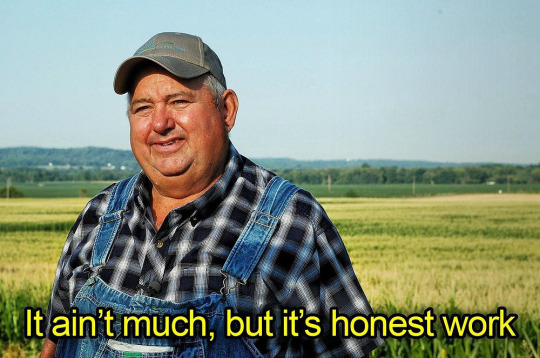
#theaftersundown#writers on tumblr#creative writing#novel writing#writerscommunity#female writers#fanfiction#artists on tumblr#archive of our own#romance novels#graphic novel#writers block#writing memes#writing motivation#aspiring writer#writers of tumblr#ao3 writer#writeblr#writers and poets#amwriting#ao3#fiction writing#currently reading#books and reading#book blog#writing life#writing prompt#creative process#ao3feed#ao3 fanfic
17K notes
·
View notes
Text
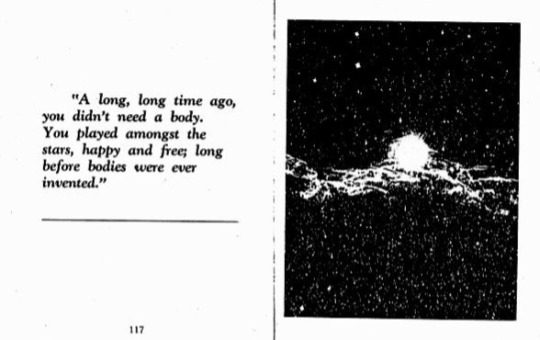


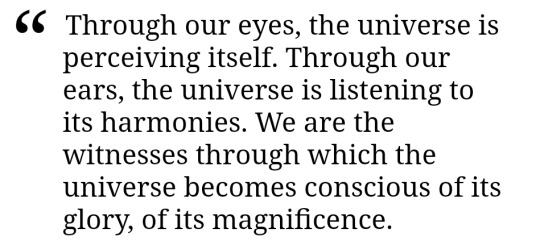
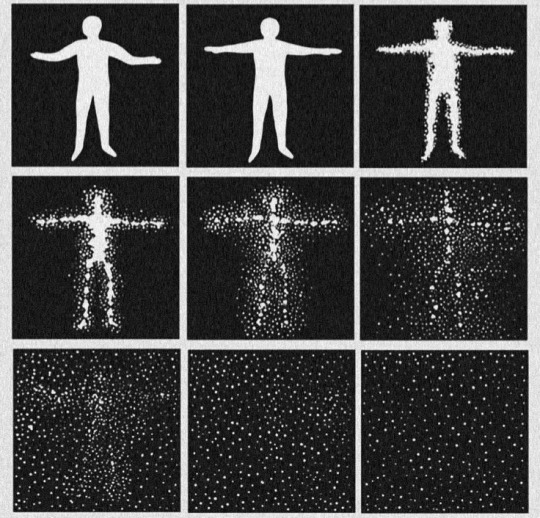
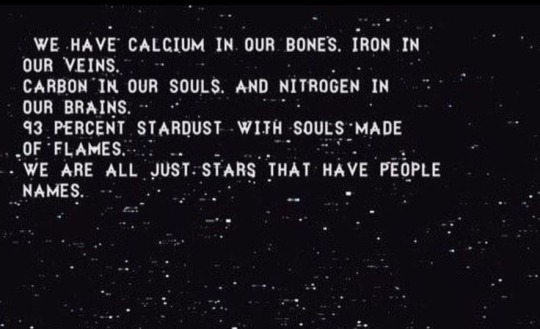



D. Alan Holmes, Enlightenment // Signet Amenti // @cryptonature // Alan Wilsom Watts // Evan M. Cohen, "Oceans" // Nikita Gill // @pauladoodles // Julian Gough, "Minecraft End Poem" // Sleeping At Last—Saturn
#theme: we are the universe experiencing itself#web weaving#webs#web weave#poetry#prose#aesthetic#prose poetry#literature#art#book quotes#novels#novel quotes#books#quotes#words#writing#inspo#parallels#compilation#poems#poems and poetry#illustration#song lyrics#existentialism#philosophy#on life#on humanity#stars#space
7K notes
·
View notes
Text

[Incredibly cute guest art done by shmeemin on Tumblr]
HAPPY NEW YEAR! 🎉 We're over the moon to say: Come check out our plans for 2025! Updates, dev notes, and more are now available. Link to our Year Start blog below ⬇️ Month Beginning Post: 2025 & January Plans
1K notes
·
View notes
Text
The Mini Guide to Crafting Compelling Royal Characters for Fiction Writers
Creating royal characters can be both exciting and challenging. These regal figures often play pivotal roles in stories, capturing readers' imaginations with their power, privilege, and the weight of responsibility they carry. Whether you're writing historical fiction, fantasy, or contemporary novels featuring monarchs, this comprehensive (mini) guide will help you develop authentic, multi-dimensional royal characters that will resonate with your readers.
Understanding the Basics of Royalty
Before diving into character creation, it's essential to have a solid grasp of what royalty entails. Royalty typically refers to members of a ruling family, including kings, queens, princes, princesses, and other nobles within a monarchical system. These individuals are often born into their roles, though some may ascend to power through marriage or other means.
Key aspects to consider:
Hierarchy and succession
Royal duties and responsibilities
Protocol and etiquette
The concept of divine right (in some cultures)
The relationship between royalty and their subjects
Remember, while these elements are common in many royal systems, you have the creative freedom to adapt or reimagine them for your fictional world.
Developing Your Royal Character's Background
Every character, royal or not, needs a rich backstory. For royal characters, this background is particularly crucial as it shapes their worldview, values, and decision-making processes.
Consider the following:
a) Lineage: What is your character's family history? Are they from a long-standing dynasty or a newly established royal house?
b) Upbringing: How were they raised? Were they groomed for leadership from birth, or did they have a more sheltered upbringing?
c) Education: What kind of education did they receive? Was it formal, focusing on statecraft and diplomacy, or more well-rounded?
d) Relationships: How do they relate to their family members, courtiers, and subjects?
e) Personal experiences: What significant events have shaped their character and outlook on life?
Crafting a Unique Personality
Avoid the trap of creating one-dimensional royal stereotypes. Your character should be as complex and nuanced as any other well-developed protagonist or antagonist.
Consider these aspects:
a) Strengths and weaknesses: What are your character's admirable qualities? What flaws do they struggle with?
b) Motivations: What drives them? Is it a sense of duty, personal ambition, or something else entirely?
c) Internal conflicts: What personal struggles do they face? How do these conflicts affect their rule and relationships?
d) Hobbies and interests: What passions do they pursue outside of their royal duties?
e) Sense of humor: How do they express humor, if at all? Is it dry wit, sarcasm, or something else?
Balancing Power and Vulnerability
One of the most intriguing aspects of royal characters is the juxtaposition between their immense power and their human vulnerabilities. This balance can create compelling internal and external conflicts for your character.
Consider:
The weight of responsibility and its impact on their personal life
The isolation that often comes with a royal position
The constant scrutiny they face from the public and court
The struggle between personal desires and duty to the crown
Creating a Believable Royal World
Your royal character doesn't exist in a vacuum (I hope not). They're part of a larger royal ecosystem that includes family members, advisors, courtiers, and subjects. Developing this world adds depth and authenticity to your story.
Key elements to consider:
Court dynamics and politics
Relationships with other noble houses or kingdoms
The role of advisors and how they influence decisions
Traditions and customs specific to your royal setting
The economic and social structure of the kingdom
Addressing the Challenges of Royal Life
Royal characters face unique challenges that can drive your plot and character development. Some common themes include:
a) Succession disputes b) Balancing personal happiness with duty c) Navigating political alliances and conflicts d) Managing public opinion and maintaining legitimacy e) Dealing with threats to their rule or life
Use these challenges to create tension and drive your story forward while revealing more about your character's personality and values.
The Impact of Historical Context
If you're writing historical fiction or a fantasy inspired by real-world monarchies, it's crucial to consider the historical context. Research the time period and culture you're drawing from to ensure authenticity in your character's behavior, beliefs, and challenges.
Key areas to research:
Social norms and expectations of the time
Political systems and power structures
Technology and its impact on governance
Religious beliefs and their influence on royalty
Gender roles and how they affect royal duties and succession
Avoiding Common Pitfalls
When creating royal characters, be mindful of these common mistakes:
a) Making them too perfect or too villainous b) Ignoring the realities of royal life (e.g., lack of privacy, constant duties) c) Overlooking the impact of their decisions on their subjects d) Failing to show growth or change over the course of the story e) Relying too heavily on stereotypes or clichés
Incorporating Royal Etiquette and Protocol
Royal characters often adhere to strict codes of conduct and protocol. While you don't need to become an expert in royal etiquette, incorporating some of these elements can add authenticity to your story:
Forms of address (Your Majesty, Your Highness, etc.)
Court ceremonies and rituals
Dress codes and regalia
Rules of precedence in social situations
Diplomatic protocols when interacting with other royals or dignitaries
Exploring Different Types of Royal Characters
Remember that not all royal characters need to be ruling monarchs. Consider exploring other royal roles, such as:
The rebel prince or princess who rejects their royal duties
The reluctant heir thrust into power unexpectedly
The exiled royal fighting to reclaim their throne
The royal spouse adapting to life in the palace
The illegitimate child discovering their royal heritage
Each of these archetypes offers unique storytelling opportunities and challenges for character development.
Balancing Historical Accuracy and Creative License
If you're writing historical fiction featuring real royalty, you'll need to strike a balance between historical accuracy and creative interpretation. While it's important to respect known facts and timelines, you also have the freedom to explore the inner lives and motivations of these historical figures.
Tips for balancing accuracy and creativity:
Thoroughly research the historical figure and their time period
Clearly differentiate between historical fact and fictional interpretation
Use author's notes to explain any significant departures from known history
Focus on filling in the gaps in the historical record rather than contradicting established facts
Developing Royal Character Arcs
Like any well-rounded character, your royal protagonist should undergo growth and change throughout your story. Consider how their experiences might challenge their beliefs, alter their perspective, or force them to confront their flaws.
Possible character arcs for royal characters:
From naive idealist to pragmatic ruler
From reluctant heir to confident leader
From isolated monarch to connected leader who understands their subjects
From power-hungry tyrant to benevolent ruler (or vice versa)
Remember, character growth doesn't always have to be positive. Sometimes, the most compelling stories involve characters who face moral decline or tragic falls from grace.
Remember, while the trappings of royalty may be grand, at their core, your royal characters are still human. They love, fear, hope, and struggle like anyone else. It's this humanity, set against the backdrop of power and responsibility, that makes royal characters so fascinating to read and write about.
Happy writing, - Rin T
Hey fellow writers! I'm super excited to share that I've just launched a Tumblr community. I'm inviting all of you to join my community. All you have to do is fill out this Google form, and I'll personally send you an invitation to join the Write Right Society on Tumblr! Can't wait to see your posts!

#writing#creative writing#thewriteadviceforwriters#writing tips#writers block#writeblr#how to write#writers and poets#writers on tumblr#on writing#royalcore#royalty#romance writing#writing advice#writing blog#writing guide#writing inspiration#writing ideas#writing reference#writing resources#writing software#writing tools#writer#writing life#writing help#writing community#writing characters#novel writing#fiction writing#writing a book
2K notes
·
View notes